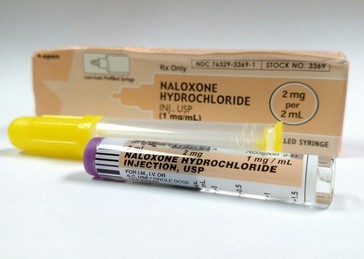 The U.S. Food & Drug Administration (FDA) has approved naloxone hydrochloride (ZIMHI) injection to treat opioid overdose. Naloxone is a medicine utilized to help reduce opioid overdose deaths, and prefilled syringes are now an additional option. This drug can be administered through an intramuscular or subcutaneous injection containing 5 milligrams of naloxone hydrochloride. This high dose medication should result in higher levels of naloxone circulating in the body, which in turn should lead to more successful resuscitations.
During an overdose on opioids, an individual’s breathing may become shallow or stop, leading to death and there is no medical intervention. After use of ZIMHI for an opioid-dependent individual some symptoms may occur, such as runny nose, sweating, severe body aches, vomiting and diarrhea.
 Employers can play an important role in the life of a person with substance use disorder who is in recovery. Below are seven important points to help employers to retain their employees during substance use treatment.
- Discuss outpatient treatment
Some individuals are eligible for outpatient treatment, encourage your employee to discuss these options with their doctor.
- Set up an employee assistance program
An employee assistance program (EAP) is a work-based program that helps employees cope with personal issues such as addiction that affect their job performance. EAPs provide free, confidential resources, such as education, assessments, counseling, and referrals to support groups. For an EAP directory by state, click here.
- Provide accommodations
Substance use disorder is included under the Americans with Disabilities Act that meets criteria for reasonable accommodations to be made by the employer. An accommodation is a change of the work or work environment that assist an individual to complete their essential functions.
- Offer a flexible work schedule
Providing a flexible schedule can help individuals be able to assist their treatments and therapies during the week. Shorter workdays or multiple breaks can also help reduce stress related to substance use.
- Encourage self-care
Stress is a significant symptom related to substance use treatment, which is why it is important to create a workplace that allows the individual to relax and be able to provide self-care practices in the office.
- Reduce stigma
Educating the workplace about language that stigmatizes substance use and how to avoid it can create a safe space for someone in recovery. Meetings discussing drug abuse can also benefit the employees going through substance abuse treatment.
- Discuss medical leave
Companies with 50 employees or more, are covered by the Family and Medical Leave Act. This act provides up to 12 weeks of unpaid leave for substance use treatment.
The following links provide helpful tips for employers
Researchers have pooled data from the 2008 to 2017 Medical Expenditure Panel Surveys (MEPSs). Their goal was to understand the economic burden of an adult household with an opioid prescription compared to those in a household where no adult was prescribed an opioid. This cross-sectional study was carried out due to the lack of research that characterizes the healthcare costs and expenditures among those prescribed opioids.
The annual cost was adjusted to 2019 U.S. dollars and then the data was compared between groups. The average annual total expenditures per household with an opioid prescription were $16, 542 compared to households without an opioid prescription being $7,067. Other expenses adjusted to 2019 U.S. dollars, such as outpatient, emergency department and inpatient expenditures, were significantly higher for households with an opioid than those without an opioid.
The findings from this research emphasize the economic burden among people with an opioid prescription that can help policymakers make decisions about policy, guidelines and strategies to address the opioid crisis.
|